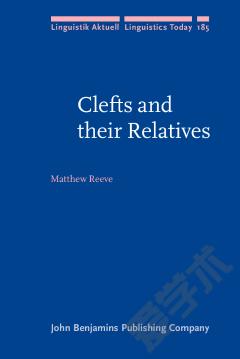Clefts and their Relatives.
Cleft constructions have long presented an analytical challenge for syntactic theory. This monograph argues that clefts and related constructions cannot be analysed in a straightforwardly compositional manner. Instead, it proposes that the locality conditions on modification (for example by a restrictive relative clause) must be reformulated such that they account for the apparent compositionality of DP-internal modification whilst also permitting ‘discontinuous’ modification of the type which is independently needed for constructions such as relative clause extraposition. The empirical focus of the book is on clefts in English and Russian, which have a similar interpretation but considerably divergent syntactic structures. The author argues that, despite these syntactic differences, both types of cleft are mapped to their semantic interpretations in the same manner. This monograph will be essential reading for those working on cleft constructions and copular sentences more generally, and will be of interest to those working on the syntax-semantics interface.
{{comment.content}}








 京公网安备 11010802027623号
京公网安备 11010802027623号